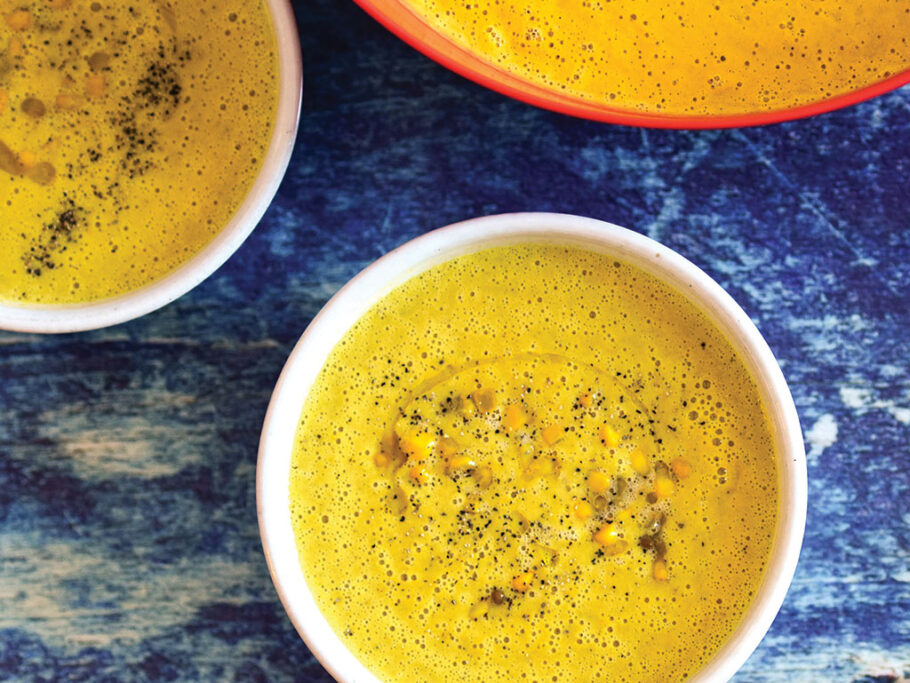Flour Power
The year was 1790. George Washington made his first presidential address. Rhode Island became the final state to ratify the US Constitution. And the first US census determined that the country had 3.9 million people, with New York City leading the way with a population of 33,000.
It was also when America’s first flour business, Henry Wood & Company, was founded in Boston. Approximately a century later, in 1896, the owners of the company (then known as Sands, Taylor & Wood Company) had an epiphany at the theater. Inspired by the upstanding values they witnessed in the play King Arthur and the Knights of the Round Table, they gave their product a regal new name: King Arthur Flour.

Today, the company makes its popular products in Norwich, Vermont, and employs almost four hundred people. The Sands family owned it for five generations until they incorporated it as King Arthur Flour in 1996 and started selling it to their employees; by 2004, King Arthur Flour was 100 percent employee owned. However, through all the changes, its principles have remained the same more than 225 years later.
“It’s probably a little cliché, but I think we still actually live by a lot of those Arthurian values,” says Bill Tine, King Arthur Flour’s vice president of marketing. “Certainly doing the right thing is one of those values. Our products haven’t changed over the years. They’re still the highest quality.”
Their primary product is flour, of course. You can find over forty varieties of it in grocery stores nationwide, including their gluten-free flours and their line of baking mixes, Essential Goodness. But there’s much more to sift through in their Baker’s Catalogue, which they’ve been mailing since 1990, and on their dynamic website, including baking ingredients, mixes, and even baking utensils and pans. “We have over nine hundred items, about half of which are branded King Arthur Flour,” Tine says. “For example, we sell our own Vietnamese Cinnamon, which you can get directly from us and only a few other retailers like Amazon.”
*See below for ingredients and instructions.
Food Fit For a King
In the eighteenth century, the company imported wheat from England because of its higher quality. Today, the best available wheat is grown in the US, and that’s the only wheat King Arthur Flour uses so it can provide top-notch flour to its customers. “We are strictly an unbleached product company,” Tine states. “Theoretically, our insistence on high quality could give us profitability challenges because it is sometimes hard to reach the standard that we expect at a cost we want, but making sure that we’re only launching products that we’re proud of eventually makes it right in the long run.”
According to Tine, many commercial flour products have two chemicals, bromate and chlorine, added to them. Bromate speeds up the aging and oxidation process for flours. Chlorine also chemically ages the product, but its primary purpose is to make a whiter-colored flour by bleaching out any discoloration—which is why you may be used to seeing unbleached flour have a natural creamy color and bleached flour a brilliant white color. “Plus, to some degree, there’s a taste difference because you can sometimes perceive the chlorine,” Tine adds. “So we also believe we provide a better-tasting flour.”
Treating Customers Like Royalty
In addition to providing premium products, King Arthur Flour goes to great lengths to cultivate direct relationships with its customers—always starting with the customers and asking what they want, Tine says. Its website, which went online in 1996, in particular has become a hot spot for King Arthur devotees. You’ll find over 3,500 recipes and over 1,500 blog posts there, as well as baking guides and even access to a baker’s hotline that’s available seven days a week for baking emergencies.
The end result? A mecca of baking creativity as well as a hub for learning. “It’s relatively easy to engage people on how to make great sourdough or chocolate chip cookies because people can quickly go home and do that,” Tine says. “But by engaging them with that content, we can also engage them on more product-focused or industry-focused themes.” So, for example, people who seek an apple pie recipe can also learn why unbleached flour is not only better tasting but also better for you.

In addition, people can learn how King Arthur Flour works closely with its US wheat farmers to provide better products—which Tine says is one of the company’s biggest initiatives: “We’ve created vital, direct relationships with farmers. For example, our white whole wheat flour is what we call identity preserved, so we know the exact farmer and the plot that the wheat was grown on and can trace it back to the farmer. That creates a bond with our farmers and trust with our customers.”
Noble Gestures
For decades, the company has also sought to open paths to education, thanks to cofounder Brinna Sands’s passion to teach others about baking. In 2000, Brinna’s ultimate dream came true when King Arthur Flour built a baking-focused campus (dubbed Camelot) in Norwich, which hosts a baking school, a bakery and café, and a store. In addition, the company recently opened a West Coast baking school as part of Washington State University’s Bread Lab to further organic grain breeding and agriculture innovation. Their baking education also includes a dozen online classes on craftsy.com, in which over 100,000 students have already enrolled.
As far as younger students go, King Arthur Flour has imbued a love of baking into over 300,000 middle-school kids through its Baked for Good: Kids program. Since 1992, Baked for Good: Kids (originally called the Life Skills Bread Baking Program) has sent its bakers to schools around the country to teach kids baking skills—but also much more. Each child spends time learning how to bake and then goes home with flour and recipes for baking two loaves of bread: one is kept at home to share with his or her family, and the other is brought back to his or her school, which then donates the bread to a local food shelf. So the program teaches kids not only the science behind making bread but also how to share what they can with others.
This desire to build community and help others extends to the owner-employees as well. “I’ve been here for over eight years. As an employee, it’s amazing,” Tine reveals. “It’s very different than other companies I’ve worked for, especially in the food industry—not only because we are employee owned but also because we’re an open book company, so we share financials with employees. I think a lot of companies might see this as a challenge, but it brings a lot of accountability. And I think those two things create a culture of trust, where everyone is really in it together.”
To help strengthen such a culture, the company has a volunteer program, through which all full-time and part-time employees get forty hours of paid volunteer time each year in addition to their earned vacation time. That’s about 6,000 hours a year dedicated to service—and an immeasurable benefit to the company’s hundreds of co-owners.

For all of its efforts to enhance the work lives of its employees, the company was named the Employee-Owned Company of the Year by the ESOP Association in 2016, and it has been named one of the best places to work in Vermont for twelve years running.
Kingly Kindness
From the beginning, King Arthur Flour’s goal has always been to do better: with its name, its products, its employees, its customers—and the world itself. To make the last goal come to fruition, the company has instituted a variety of initiatives, such as partnering with 1% for the Planet to donate one percent of all their whole wheat sales to help communities and food producers.
“But we also wanted to do something more connected to the product and potentially even more significant,” Tine adds, “so we decided to do a matching program where, for every mix purchased, we’d give a meal through Feeding America. We made an agreement that, based on our sales forecast, we’d donate a certain amount—but we’d still donate it even if we didn’t hit our projection. However, if we exceeded it, we would donate more. We were willing to take on that risk.”
And the chance they took was well worth it for everyone involved. In the first year, they guaranteed a million meals, and in the second year, they upped it to a two-million-meal commitment. In addition to this support, they assist other organizations like the Whole Kids Foundation, Hot Bread Kitchen in New York, Philabundance, and In Good Company.
All in all, King Arthur Flour had lofty standards to live up to when it changed its name in the late nineteenth century. But it would have made its namesake proud—as it continues on a never-ending quest to provide honest, high-quality products and to do the right thing.
For more info, visit kingarthurflour.com.
King Arthur Flour Pumpkin Yeast Bread
Ingredients
Instructions:
- Place all of the ingredients into a large bowl, and mix, and knead by hand, using a mixer, or in a bread machine set on the dough cycle, to make a smooth, soft dough.
- Put the dough into a lightly greased bowl. Cover, and let it rise until doubled, about 60 to 75 minutes.
- Gently deflate the dough, and turn it out onto a lightly oiled work surface. Divide it in half.
- Shape each half into a loaf, and place in lightly greased 9″ x 5″ loaf pans. Alternatively, shape half into a loaf, and the other into 12 to 16 rolls, which can be placed into two 8″ round pans, or into a 9″ x 13″ pan. Or, simply shape all of the dough into 24 to 32 rolls.
- Cover the pan(s) and let the loaves/rolls rise until almost doubled, about 45 minutes. Toward the end of the rising time, preheat the oven to 350°F.
- Bake the bread for 30 to 35 minutes, or until its crust is a deep golden brown, and a digital thermometer inserted into the center registers about 190°F. Bake the rolls for about 20 minutes, until golden brown.
- Remove the bread from the oven, and turn it out onto a rack to cool. Store completely cool bread or rolls well-wrapped, at room temperature, for several days; freeze for longer storage.
- Yield: 2 loaves; or 1 loaf and 12 to 16 rolls; or 24 to 32 rolls.
Photo and recipe courtesy of King Arthur Flour.
For more recipes and baking tips from King Arthur Flour, visit www.kingarthurflour.com/recipes.






















